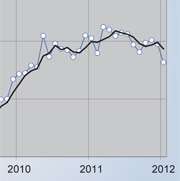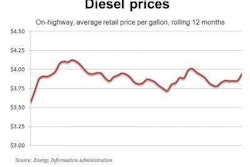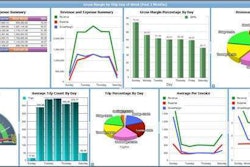
The Ceridian-UCLA Pulse of Commerce Index issued Tuesday, Feb. 14, fell 1.7 percent in January following a 0.4 percent decrease in December. January’s data places the PCI 2.2 percent below year-ago levels with essentially no growth in the year-and-a-half since the summer of 2010.
The index, issued monthly by the UCLA Anderson School of Management and Ceridian Corp., is based on real-time diesel fuel consumption data for over-the-road trucking and serves as an indicator of the state and possible future direction of the U.S. economy.
“It seems difficult to square the behavior of the PCI with the evident improvement in a number of economic indicators, most notably the increase in payroll jobs and the decrease in initial claims for unemployment,” said Ed Leamer, chief economist for the index and director of the UCLA Anderson Forecast. “The PCI also seems out of sync with industrial production and with real retail sales, which continue to grow in a healthy manner, while the PCI is stalled out.”
The year-over-year changes in the PCI, however, make it look accurate – the three-month moving average peaked at 8 percent in July 2010 and has fallen steadily to essentially zero percent in January. “The PCI year-over-year peak in 2010 and the deterioration throughout 2011 have correctly anticipated the same movement of industrial production, total business real inventories and real retail sales,” said Leamer. “The weakness in the PCI is suggesting either further weakness in these indicators or a big gain in trucking in February, March and April.”











